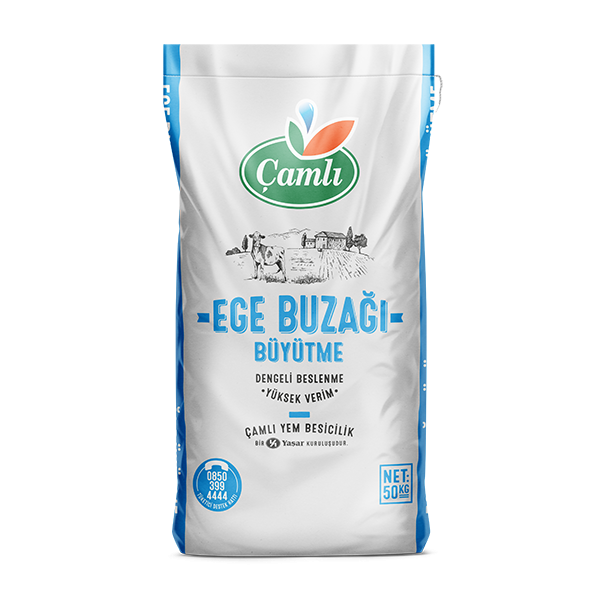Aegean Calf Grower Feed
Aegean Calf Grower Feed is prepared to meet sufficiently and in a balanced and economical manner the nutrition elements that calves requires from the beginning of the 4th month up to the end of the 6th month.
Properties:
- It enhances the benefiting from of the feed by accelerating the physical development of rumen.
- It strengthens the immune system of the calves.
- It increases the development performance due to the raw materials with high digestibility included in its content
- It leads to fast growing weight gain and high carcass yield at the end of the season in male calves to be raised as beef cattle.
- With high growth performance, it enables female calves to be employed for breeding at an earlier age.
- It plays an active role in maintaining high fertility during reproduction period, and high milk production during productive period.
Important Information:
- The vicinity of the mouth and nose of a new born calf is cleaned immediately after a normal birth; the aim here is to provide the baby calf with a chance to start breathing right after the birth. The mother must stimulate the circulation and respiration by licking the calf immediately after the birth. If the mother is not licking the calf, the said operation must be carried out by the farmer manually with a dry cloth as if doing a massage. The umbilical cord of the new born calf must be cut at a distance of 4-5 cm and cleaned with a suitable antiseptic soon after the birth.
- Again, we should force the calf to drink 2 liters of colostrum by means of a feeding bottle within the shortest possible time after the birth (First two hours). It has to drink at least 2 liters of colostrum more within the 8-12 hours thereafter.
- The calf that starts to stand on its own feet should be moved to an individual section as soon as possible. Sections should be planned with a floor area of 1.5 - 2 m², abundant bedding material, clean and airy and benefit from daylight sufficiently and sheltered from the dominant winds. There must be fresh water and starter feed at easily accessible and clean place in the section at all times. It is important here that the waterer and the manger should be separated.
- The Milk amounting to 4-6 liters, or practically an amount not exceeding 10% of the live weight, throughout the first 30 days or, up by the time calf starts to consume 450-500 grams of calf starter feed, must be given daily in two meals. Later 2-3 liters of milk can be given daily. It is deprived of such milk when it starts consuming 1 kg of starter feed. The condition of the calf must be taken into consideration while deciding on weaning. some calves may have growth retardation or another health problem, thus it will be useful to continue milk in order to overcome such problems. Weaning on milk may be postponed for a while during extremely cold and rainy weathers up until the conditions are favorable.
- Milk should be given at 38° C with a feeding bottle and taking necessary sanitary measures.
- It can be given increasing 50% during very cold weathers.
- You can start giving proper and quality hay to the calves started to consume daily 500-600 grams of starter feed. If the bad quality is given too much at early stages, then this reduces the starter feed consumption, slows down the rumen development and adversely affects the live weight growth and daily weight gain. In case it is given at early stages, the amount of the hay should not exceed 10-15% of the grower feed.
- Another matter to be considered in the beginning period is to avoid simultaneous introduction of many changes in the husbandry and feeding systems and to refrain from putting the calves without proper growth and health, into the collective sections.
- Healthy calves in the 3rd-6th month period are put into collective cattle housings and raised all together. In this period the calves are supplied with good quality grower feed, free and fresh water together with good quality hay. During this period, it will be advantageous if the animals should be housed in such sections which are dry, airy, having clean bedding, can benefit from daylight, offers sufficient paddock and feeding area per calf. It is advisable to maintain animals in paddock at as close ages to one another as possible. It is not recommended that the number of animals in a section is more than 20-25.
- It is worthwhile to make vaccination and health practices of our calves within the framework of a protocol.


